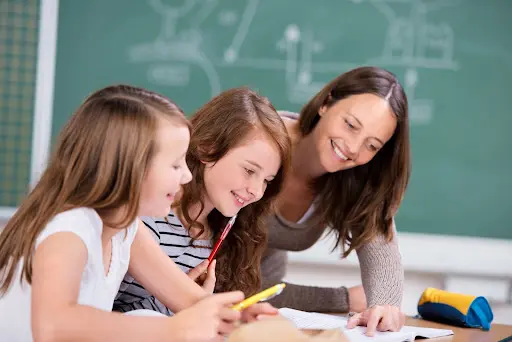1:1 – Computers + Physical Planners = Student Success
As technology becomes more and more common in schools, finding the right balance between devices and traditional mediums like paper and pencil has become increasingly difficult for students. The COVID-19 pandemic saw many schools scrambling to find technology for students to use while at home, leading to an increase in schools providing devices to each student. The success of these 1-to-1 learning strategies led many schools to keep these strategies after students returned to the classroom.
According to a study conducted by Education Week, “90 percent of district leaders surveyed said they were providing a device for every middle and high school student, and 84 percent said they were doing the same for elementary school students.” While 1-to-1 instruction has its benefits, a combination of traditional mediums and technology benefits students the most throughout the school year.
Why does 1-to-1 work?

Outside of the classroom, students utilize their screens to watch shows, play games, and interact with one another in different online settings. While students’ increased screen time has become a concern for many people, teachers have learned to adapt their lessons to include screen time in a way that is interactive and educational.
In this way, providing students with devices in the classroom increases the likelihood of active participation, collaboration, and engagement. Students are able to access information more easily throughout the school day. Should a student have a question, either about the device they’re using or the content they’re learning, they’re also more likely to ask another student or teacher for help.
While digital devices are beneficial for student education in the classroom, students can have a hard time processing and retaining information, especially homework. Paper planners are a proven tool to help students keep track of assignments each week and learn how to prioritize tasks.
Why planners?
 Students are more likely to finish assignments when they write them down by hand rather than typing them on their devices. The act of writing by hand leads to better recall and according to neuropsychologist, Audrey van der Meer, “This is because writing and printing involve intricate movements that activate more areas of the brain.”
Students are more likely to finish assignments when they write them down by hand rather than typing them on their devices. The act of writing by hand leads to better recall and according to neuropsychologist, Audrey van der Meer, “This is because writing and printing involve intricate movements that activate more areas of the brain.”
By having a tool that activates more parts of the brain, students have an easier time remembering what they need to complete. Planners also provide students with one place to write down all their homework and allow them to break up assignments by date, helping students prioritize tasks.
Even though technology has multiple benefits to student education, it isn’t always reliable. It’s easy to delete or forget to save important information on a digital device, but planners give students a physical space to jot down assignment details that won’t be lost.
1:1 and Physical Planners Lead to Student Success
 Students who utilize paper planners alongside their digital devices are more likely to see success throughout the school year. Paper planners help students recall assignments and classwork more than they would by simply typing on a digital device. While these devices are helpful inside the classroom for interactive learning, planners are the best tool to keep students on track with homework.
Students who utilize paper planners alongside their digital devices are more likely to see success throughout the school year. Paper planners help students recall assignments and classwork more than they would by simply typing on a digital device. While these devices are helpful inside the classroom for interactive learning, planners are the best tool to keep students on track with homework.


